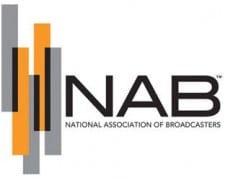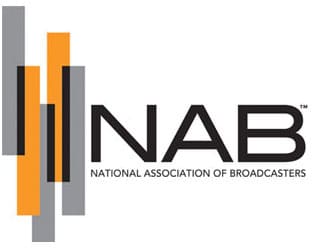 At a House hearing on the Satellite Television Extension and Localism Act, Covington & Burling attorney Gerry Waldron, testifying on behalf of the NAB, said the key responsibility of Congress is to make sure local broadcast television remains available to all citizens, and also warned about allowing other parties to hijack the proceeding and turn it into another retransmission consent battlefield.
At a House hearing on the Satellite Television Extension and Localism Act, Covington & Burling attorney Gerry Waldron, testifying on behalf of the NAB, said the key responsibility of Congress is to make sure local broadcast television remains available to all citizens, and also warned about allowing other parties to hijack the proceeding and turn it into another retransmission consent battlefield.
The hearing was held by the Judiciary’s Subcommittee on Courts, Intellectual Property, and the Internet.
Waldron made the case for localism, and pointed out that the ability of satellite video services to import distant signals has outlived its purpose, since the service has essentially been reduced to two competitors, each with ubiquitous access to the US television audience.
He also said that it is likely some parties are going to seek elements in the next version of STELA that would work against broadcasters when it comes to negotiating retransmission consent fees. He pointed out that the free market negotiation process works almost all of the time, with the exception of those occasions where one of three MVPDs – Time Warner Cable, Dish or DirecTV – are on the other side of the table. He said those parties should not be allowed to expand the narrow purpose of STELA.
Here are Waldron’s full remarks:
Good morning, Chairman Coble, Ranking Member Watt, and members of the Subcommittee. My name is Gerry Waldron. I am a partner with the law firm of Covington & Burling, and I am testifying here today on behalf of the more than one thousand free, local, over-the-air television members of the National Association of Broadcasters (NAB).
As the Committee begins its review of STELA, your broadcast constituents urge you to keep in mind two principles. First, free, locally-focused broadcast television should remain available to American households. Second, this examination should not be used to create new exceptions to copyright law that undermine those contractual relationships between broadcasters and satellite or cable companies that enable broadcasting’s local focus.
Why is localism so important? For broadcasters, localism is coverage of local news, severe weather and emergency alerts, school closings, high school sports, local elections and public affairs. Localism is support for charities, civic organizations and events that help create a sense of community. Our broadcast stations are also the way that local businesses educate and inform the public about their goods and services and, in turn, create jobs and support your economies. There is no doubt that viewers – your constituents – continue to rely on our service. Broadcast television remains unique because it is free, it is local, and it is always on – even when other forms of communication may fail.
As a threshold matter, the Subcommittee should ask whether the expiring Section 119 distant signal license continues to promote localism, and whether it is in the public interest. It could be argued that the distant signal license served its purpose in 1988, when the back-yard satellite industry was just getting started; and served its purpose again when DISH and DirecTV first launched their small-receiver services in the mid-1990s. But in 2013, when DISH and DirecTV are two of the three largest pay-tv providers in the country, the distant signal license is a vestige of a bygone era.
Today, over 98 percent of all U.S. television households can view their local network affiliates by satellite—and that number is growing all the time. No public policy justifies treating satellite subscribers in local-into-local markets as “unserved,” which would deprive viewers of the benefits of locally-focused service. As DISH has demonstrated, there are no technical reasons for failing to serve all markets. Accordingly, the Subcommittee should continue to encourage localism, and consider whether the Section 119 license should expire.
In reexamining STELA, you are likely to hear from those seeking enactment of new exceptions to the copyright laws that would undermine broadcasters’ retransmission consent rights. Let me be clear, arguments that broadcasters have too much leverage in retransmission consent negotiations, or that retransmission fees are directly responsible for rising cable bills, are wrong.
Local broadcasters and pay-tv providers both have an incentive to complete retransmission consent negotiations and for that simple reason they almost always do – before any disruption to viewers occurs. As a result, carriage disruptions from retransmission consent impasses represent only one-hundredth of one percent of annual U.S. television viewing hours. That means consumers are 20 times more likely to lose television programming because of a power outage than a retransmission consent dispute. Furthermore, in the small number of instances where these negotiations have resulted in disruptions to consumers, there is one distinct pattern: the involvement of Time Warner Cable, DirecTV and DISH. Since 2012, these three companies have been party to 89 percent of broadcast television carriage disruptions nationwide.
In contrary to what some suggest, NAB has demonstrated across numerous economic studies that retransmission consent payments are not responsible for high and rising pay-tv prices. Just two cents of every cable bill dollar goes to broadcast retransmission consent fees. That’s true in spite of the fact that during the 2011-2012 television season, 96 of the top 100 most watched prime time programs were aired by broadcast TV stations.
Lastly, the committee should understand that retransmission consent negotiations are about more than just fees. Increasingly, these negotiations include hard discussions about how we can distribute our content across a variety of competitive platforms – such as Hulu.
In conclusion, your local broadcast constituents urge you to rebuff calls from the pay-TV industry to expand the narrow examination of STELA solely to give them unfair leverage in market-based negotiations.





